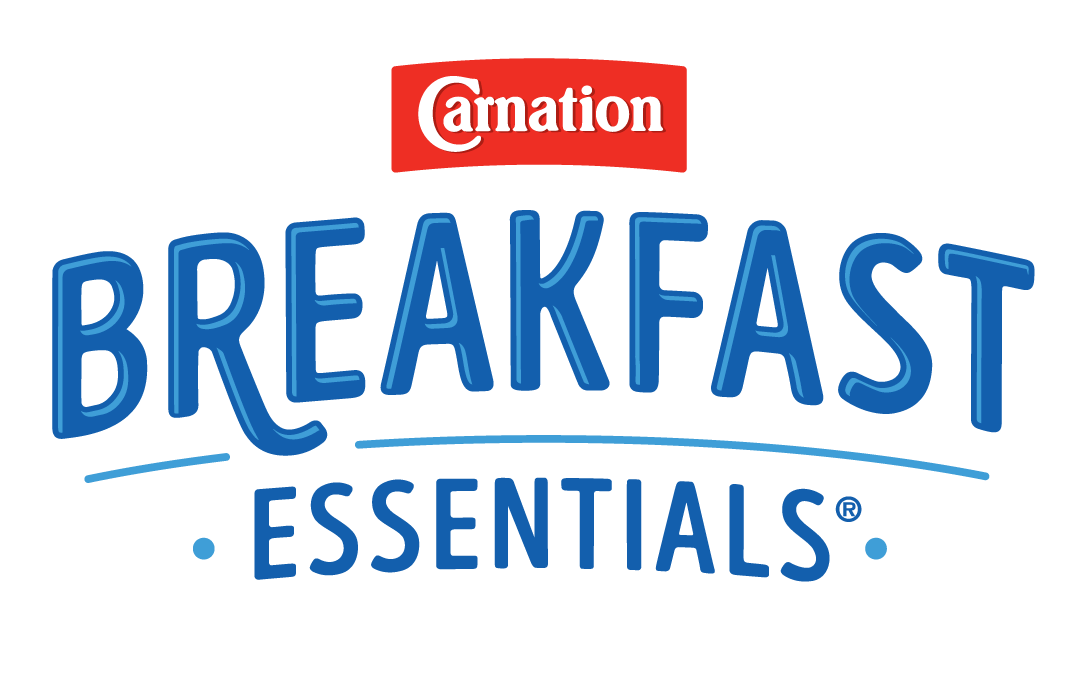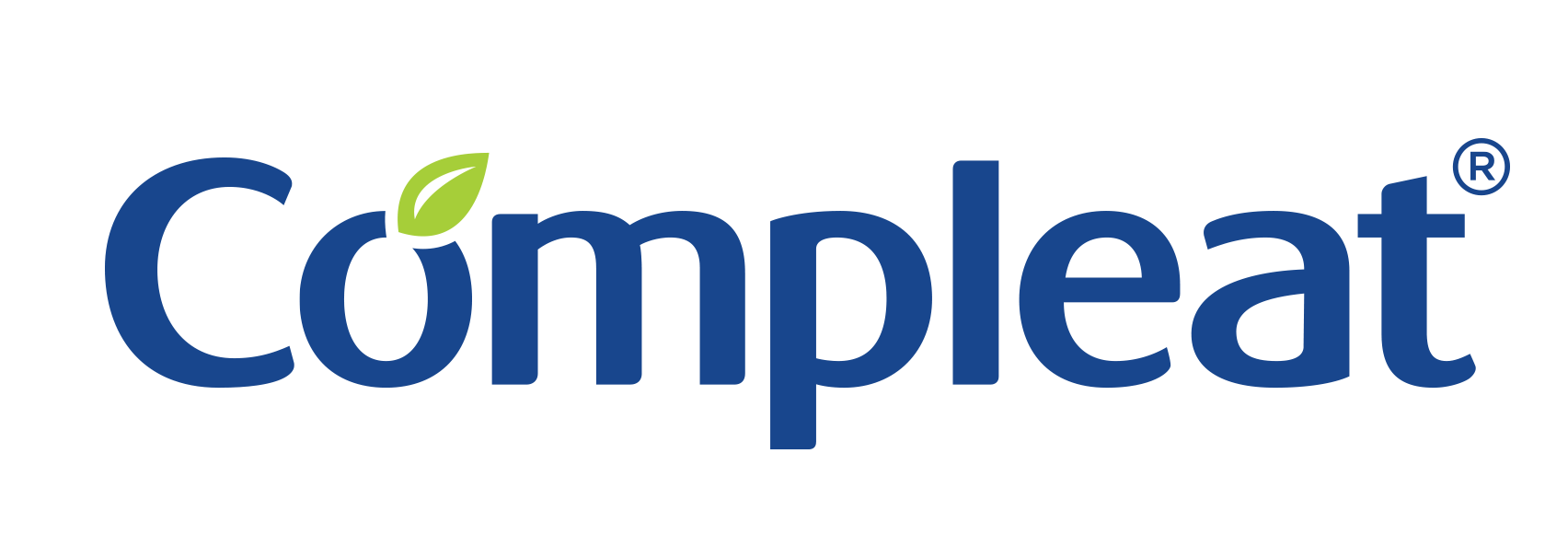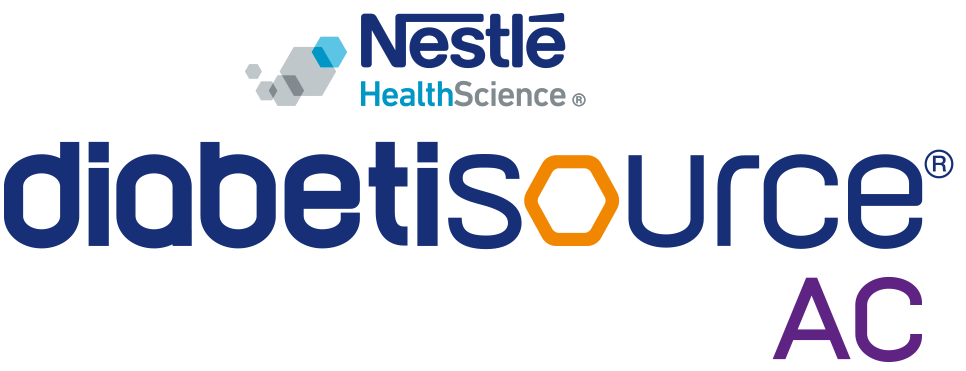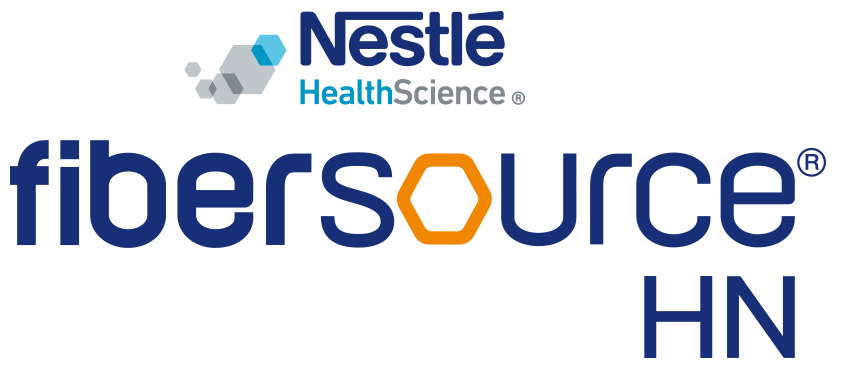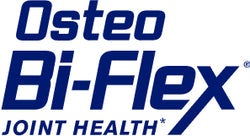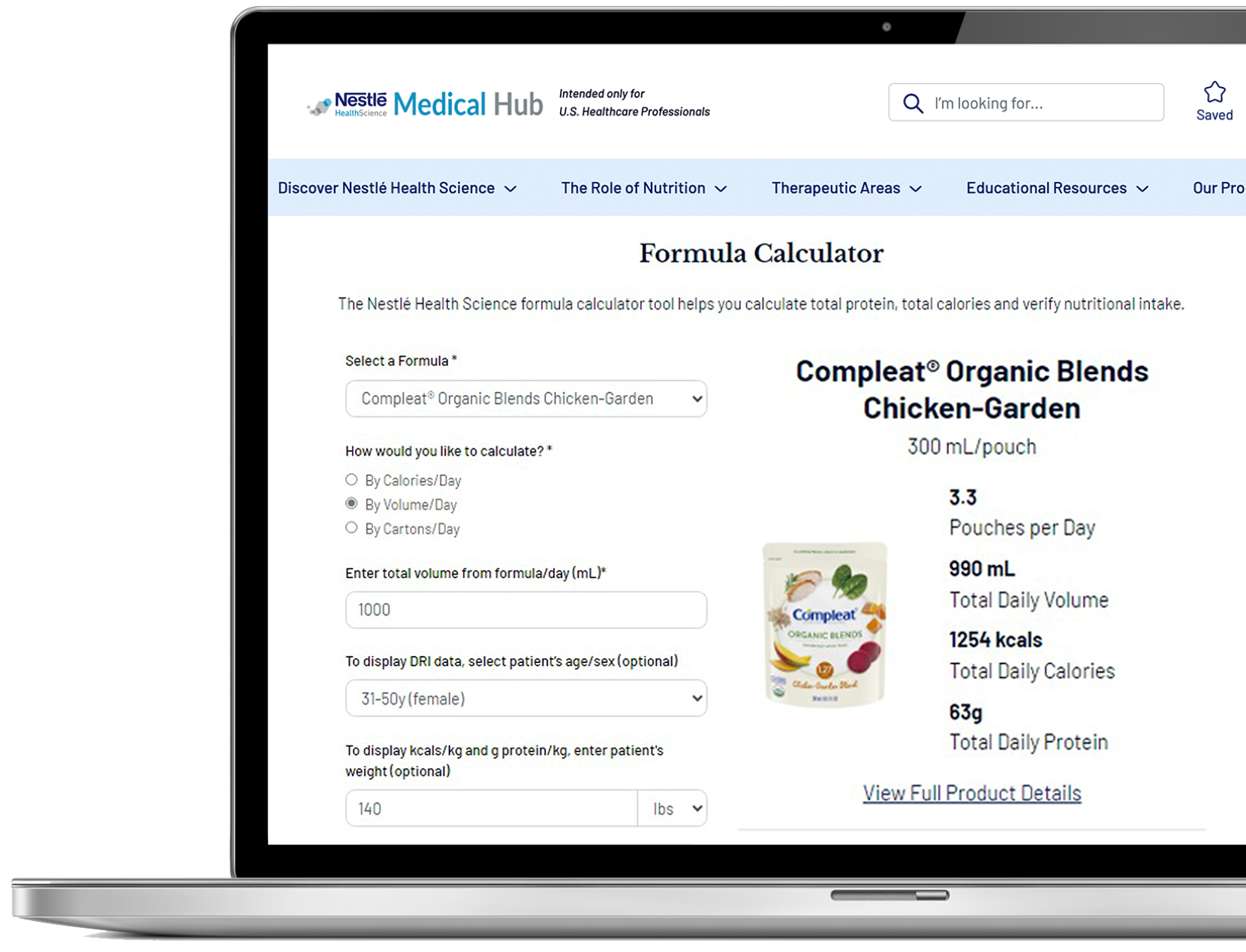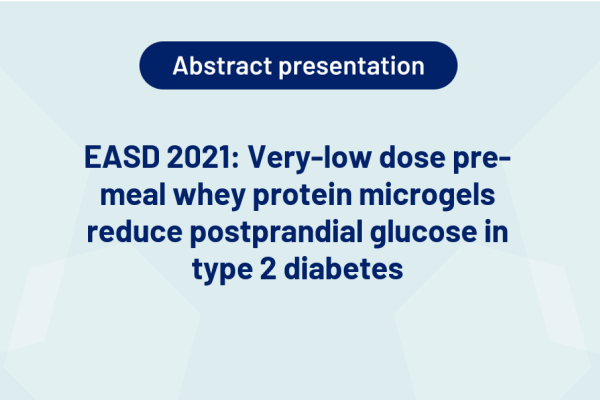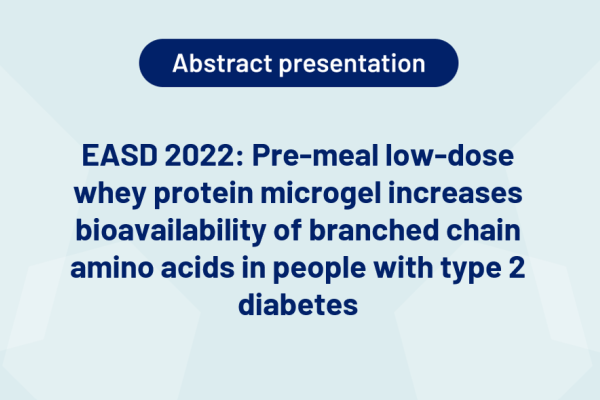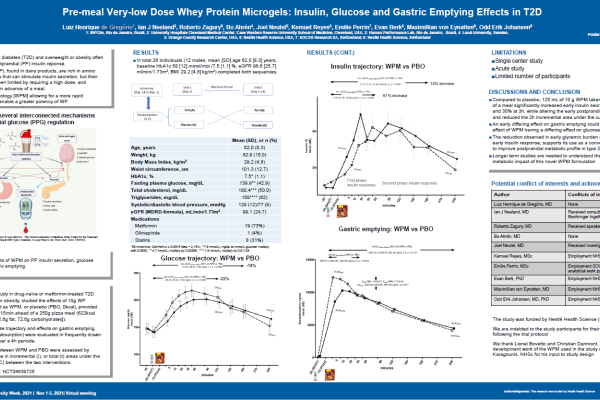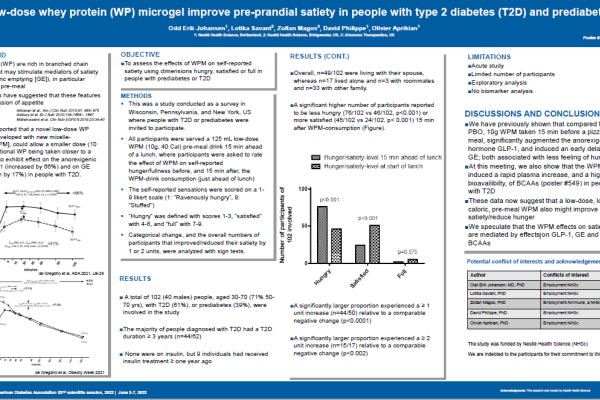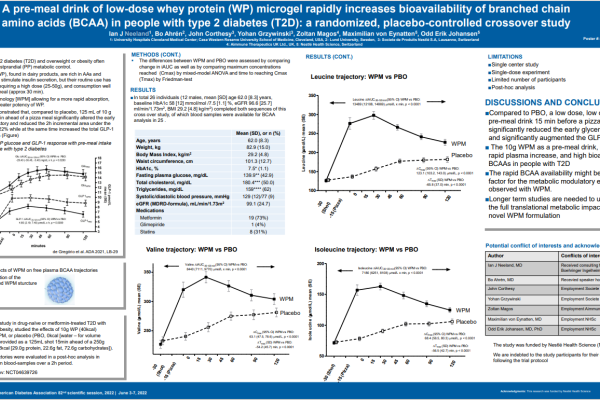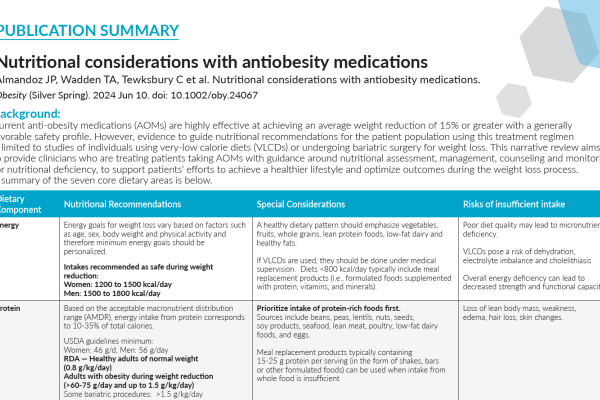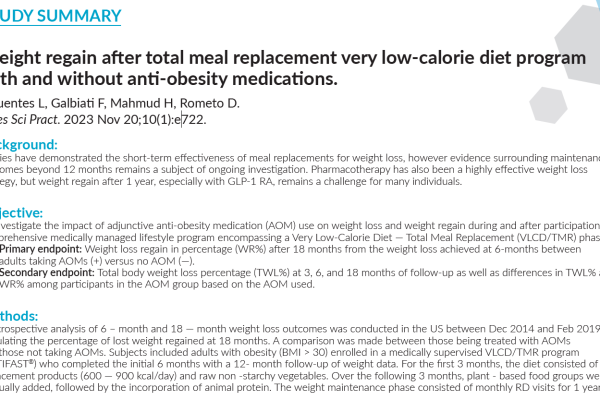Obesity
Obesity
By 2030, obesity could affect more than half of the US population.1
Obesity is often an underlying issue behind several of the most common costly, and potentially deadly, health conditions.2 Evidence shows that a decrease in BMI reduces annual medical expenditures and is likely to result in clinically meaningful health benefits.3
At Nestlé Health Science, we are actively engaged in developing nutritional therapies to help reduce obesity and its associated comorbidities, while improving the quality of life of those who are challenged by the condition.
Obesity
Obesity
By 2030, obesity could affect more than half of the US population.1
Obesity is often an underlying issue behind several of the most common costly, and potentially deadly, health conditions.2 Evidence shows that a decrease in BMI reduces annual medical expenditures and is likely to result in clinically meaningful health benefits.3
At Nestlé Health Science, we are actively engaged in developing nutritional therapies to help reduce obesity and its associated comorbidities, while improving the quality of life of those who are challenged by the condition.
Obesity
> Evidence
1. Ward ZJ, Bleich SN, Cradock AL et al. Projected U.S. State-Level Prevalence of Adult Obesity and Severe Obesity. N Engl J Med. 2019 Dec 19;381(25):2440-2450.
2. Tiwari A, Balasundaram P. Public Health Considerations Regarding Obesity. [Updated 2023 Mar 8]. In: StatPearls [Internet]. Treasure Island (FL): StatPearls Publishing; 2023 Jan-.
3. Thorpe, K; Toles, A; Shah, Bimal et al. Weight Loss-Associated Decreases in Medical Care Expenditures for Commercially Insured Patients With Chronic Conditions. Journal of Occupational and Environmental Medicine: October 2021, 63 (10); 847-851
4. https://www.niddk.nih.gov/health-information/health-statistics/overweight-obesity
5. Ryan DH, Yockey SR. Weight Loss and Improvement in Comorbidity: Differences at 5%, 10%, 15%, and Over. Curr Obes Rep. 2017 Jun;6(2):187-194.
6. Younossi ZM, Golabi P, Paik JM et al. The global epidemiology of nonalcoholic fatty liver disease (NAFLD) and nonalcoholic steatohepatitis (NASH): a systematic review. Hepatology. 2023 Apr 1;77(4):1335-1347.
7. Abd El-Kader SM, El-Den Ashmawy EM. Non-alcoholic fatty liver disease: The diagnosis and management. World J Hepatol. 2015 Apr 28;7(6):846-58.
8. Karjoo S et al. Nonalcoholic fatty liver disease and obesity: An Obesity Medicine Association (OMA) Clinical Practice Statement (CPS) 2022, Obesity Pillars, Volume 3, 2022.
9. Cusi K, Isaacs S, Barb D et al. American Association of Clinical Endocrinology Clinical Practice Guideline for the Diagnosis and Management of Nonalcoholic Fatty Liver Disease in Primary Care and Endocrinology Clinical Settings: Co-Sponsored by the American Association for the Study of Liver Diseases (AASLD). Endocr Pract. 2022 May;28(5):528-562.
10. Scragg J, Avery L, Cassidy S et al. Feasibility of a Very Low Calorie Diet to Achieve a Sustainable 10% Weight Loss in Patients With Nonalcoholic Fatty Liver Disease. Clin Transl Gastroenterol. 2020 Sep;11(9):e00231. doi: 10.14309/ctg.0000000000000231.
11. Wondmkun YT. Obesity, Insulin Resistance, and Type 2 Diabetes: Associations and Therapeutic Implications. Diabetes Metab Syndr Obes. 2020 Oct 9;13:3611-3616.
12. https://www.cdc.gov/diabetes/data/statistics-report/index.html
13. Evert AB, Dennison M, Gardner CD et al. Nutrition Therapy for Adults With Diabetes or Prediabetes: A Consensus Report. Diabetes Care. 2019 May;42(5):731-754.
14. Echouffo-Tcheugui JB, Selvin E. Prediabetes and What It Means: The Epidemiological Evidence. Annu Rev Public Health. 2021 Apr 1;42:59-77.
15. Lean ME et al. Primary care-led weight management for remission of type 2 diabetes (DiRECT): an open-label, cluster-randomised trial. Lancet. 2018 Feb 10;391(10120):541-551.
16. Noronha JC, Thom G, Lean MEJ. Total Diet Replacement Within an Integrated Intensive Lifestyle Intervention for Remission of Type 2 Diabetes: Lessons From DiRECT. Front Endocrinol (Lausanne). 2022 Jun 2;13:888557.
17. Diabetes Prevention Program (DPP) Research Group. The Diabetes Prevention Program (DPP): description of lifestyle intervention. Diabetes Care. 2002 Dec;25(12):2165-71
18. Salvia MG. The Look AHEAD Trial: Translating Lessons Learned Into Clinical Practice and Further Study. Diabetes Spectr. 2017 Aug;30(3):166-170.
19. Younossi ZM, Corey KE, Lim JK. AGA Clinical Practice Update on Lifestyle Modification Using Diet and Exercise to Achieve Weight Loss in the Management of Nonalcoholic Fatty Liver Disease: Expert Review. Gastroenterology. 2021 Feb;160(3):912-918.
20. Ard JD, Lewis KH, Rothberg A, Auriemma A, Coburn SL, Cohen SS, Loper J, Matarese L, Pories WJ, Periman S. Effectiveness of a Total Meal Replacement Program (OPTIFAST Program) on Weight Loss: Results from the OPTIWIN Study. Obesity (Silver Spring). 2019 Jan;27(1):22-29.
21. Rothberg AE, Ard JD, Auriemma A et al. Effect of Total Meal Replacement Program Compared with a Reduced-Energy Food-Based Diet Plan on Glycemic Status—Results from the OPTIWIN Study. Diabetes 1 July 2018; 67 (Supplement_1): 298–LB. https://doi.org/10.2337/db18-298-LB
22. Keogh JB, Clifton PM. Meal replacements for weight loss in type 2 diabetes in a community setting. J Nutr Metab. 2012;1-7. doi:10.1155/2012/918571.











